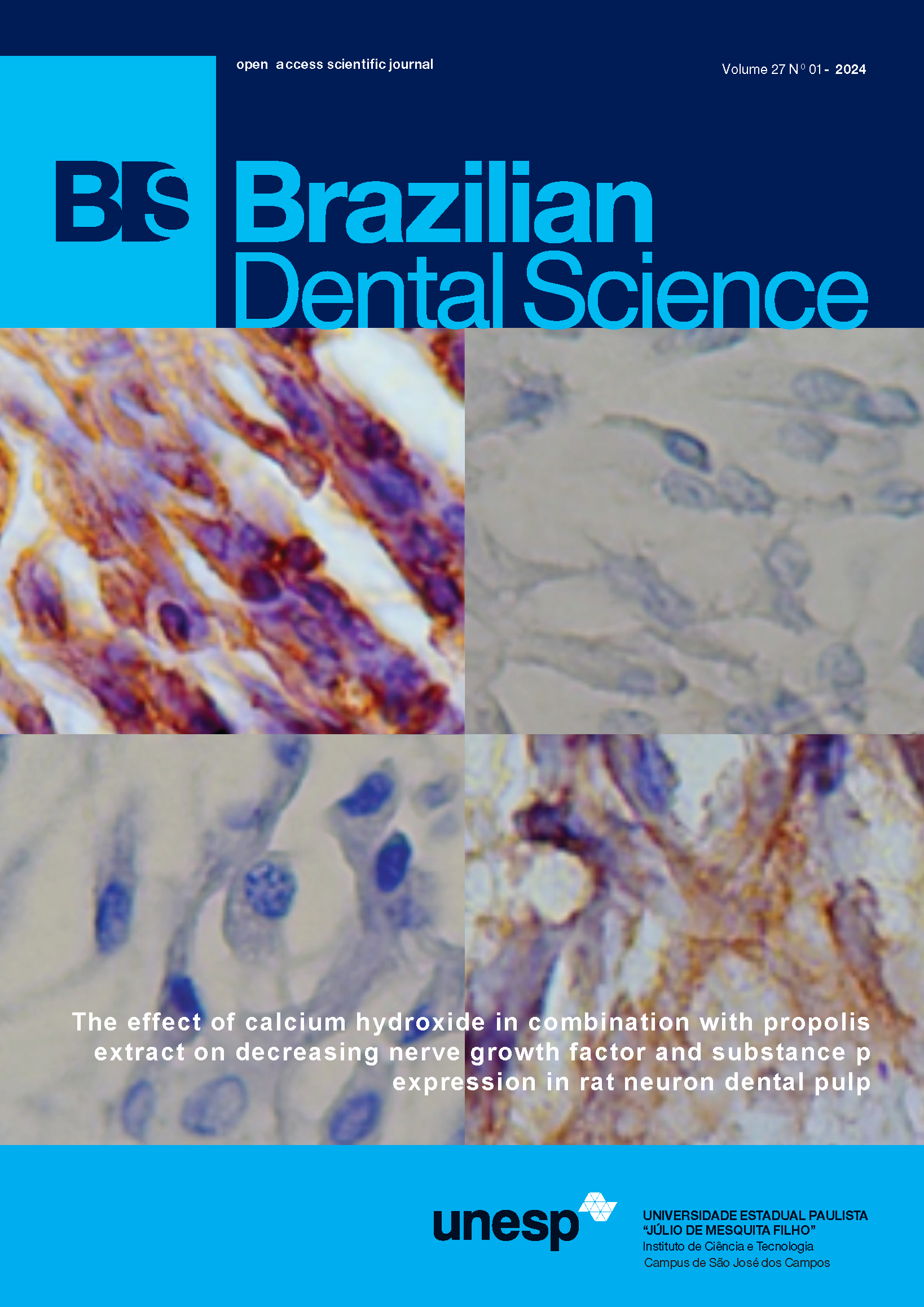Comparison of therapeutic effect of mucoadhesive Nano-triamcinolone gel and conventional triamcinolone gel on recurrent aphthous stomatitis
DOI:
https://doi.org/10.14295/bds.2019.v22i4.1837Abstract
Objective: Recurrent aphthous stomatitis (RAS) is characterized by recurring ulcers, with well-defined margins. The lesions are confined to the oral mucosa (usually seen in non-keratinized mucosa). The disease manifests in the form of outbreaks, with a chronic and self-limiting course in most cases. Since the cause of the disease is unknown, many drugs have been studied to palliate the symptoms. Treatment used is multifocal and varies according to the predisposing factors. The aim of this study was to investigate the effect of recombinant Nano-based triamcinolone acetonide gel and compare it with conventional triamcinolone gel on RAS. Material and methods: In this triple-blind randomized clinical trial study, sixty patients with minor aphthous lesions were divided into two groups receiving conventional triamcinolone (CT) and Nano-based triamcinolone (NT). The patients were requested to apply drug four times a day for a week. The severity of pain (through VAS) and the size of the lesions (mean of the largest diameter of the lesions) were evaluated on starting day and days 2, 4, 6 after the intervention. Statistical analysis was performed using chi square and independent t-test. Findings were significant with P < 0.05. Findings: Of the 60 patients enrolled in the study, 5 patients did not continue; 21 (38.2%) cases were female and 34 (61.8%) cases were male (P=0.6). The severity of pain in NT group before and after the study was 1.4 ± 5.2 and 1.8 ± 1.3 cm, respectively and in CT group was 48.1 ± 1 and 1.8 ± 1.3 cm. The size of the lesions in NT group before and at the end of the study was 0.96 ± 0.1 and 0.18 ± 0.1 cm, respectively and in CT group was 0.93 ± 0.1 and 0.19 ± 0.1 cm. Among the mentioned variables, only size of lesions on the 2nd and 4th days had a significant reduction in NT group in comparison with CT group. Conclusion: The size of lesions showed a significant reduction on the 2nd and 4th days in NT group in comparison with CT group, therefore NT has a better impact on RAS in comparison with CT.
KEYWORDS
Nanoparticle; Recurrent aphthous stomatitis; Treatment; Triamcinolone.




